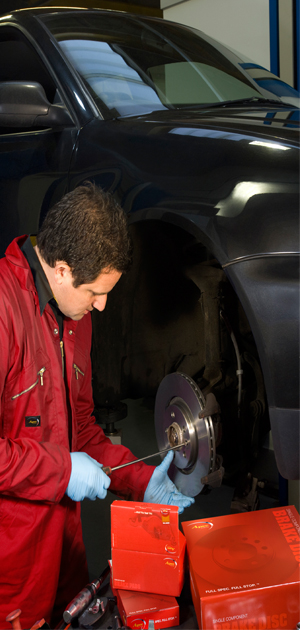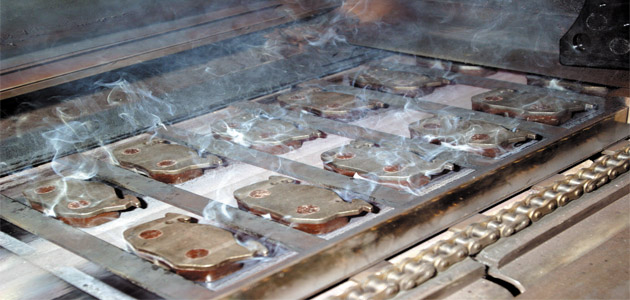
Judder is one the most annoying faults that can occur with braking systems, and if a customer comes in complaining about it, you can be sure they definitely want a cure. They’ll probably describe pulsing through the brake pedal or shaking through the steering wheel whenever they brake. The cause is almost always that the brakes are suffering from DTV: Disc Thickness Variation.

DTV means the outside and inside disc surfaces are no longer parallel, so the pads are pushed into the thinner areas and kicked back out by the thicker areas. This violent movement is transmitted back through the caliper pistons and brake fluid to the pedal, where it soon annoys the drive.
Why does it happen?
There are four main reasons for DTV: poor quality manufacturing, incorrect fitting, sticking calipers and bad driving.
Keep it clean
Incorrect fitting could then be the culprit. Make sure the hub is completely clean before you fit a new disc. Even the tiniest spec of dirt or rust causes an inboard-outboard movement that increases towards the outer edge of the disc. It probably won’t be apparent when the owner drives away, but with repeated brake applications either the disc wears unevenly, or brake pad material is deposited unevenly. Both have the same effect: judder.
A sliding fit
So we come to sticking calipers. This tends to be a less common source of judder, but it’s worth checking for. If the caliper slide pin or guidepost pin is rusted, dirty or bent, the caliper won’t ease back from the disc when the brake pedal is released, causing the pads to rub against the disc. This leads to an uneven build-up of pad material and hot spots on the disc, both resulting in judder.
Driving lesson
So what about bad driving? No customer will want to admit it, but if they’ve been careless about bedding-in new pads or discs, they’ve laid the foundations for future judder.
Apec pads make bedding-in easier because the High Pressure Treatment (HPT) process (like that pictured below) used during their manufacture reduces the time required for bedding-in. However, it’s still necessary to treat the brakes gently for the first few hundred miles, and here’s why. Bedding-in transfers an even layer of pad material to the discs, providing a consistently smooth surface that means the whole pad will contact the disc on each application, without creating high spots on the pad or variations in disc thickness. That’s the ideal scenario. Braking hard before this ‘protective’ layer has built-up means the transfer of material will be patchy and uneven, again leading to the dreaded DTV.

Apec’s advice for technicians
1. Make sure the disc and the hub are both scrupulously clean before you fit them.
2. Ensure that the caliper slides freely on its pin.
3. Lastly, try to persuade your customers that a little patience during bedding-in is well worthwhile if they want to avoid ‘the shakes’.









